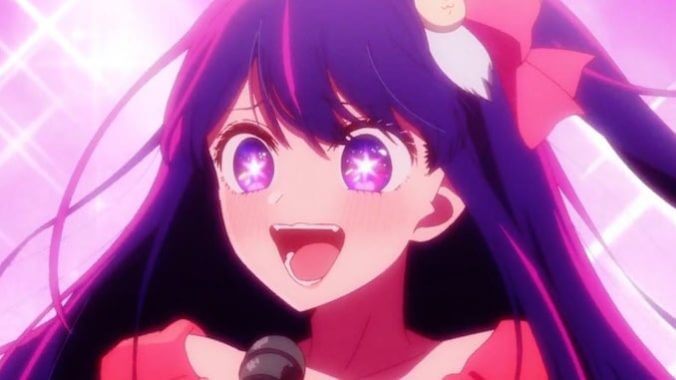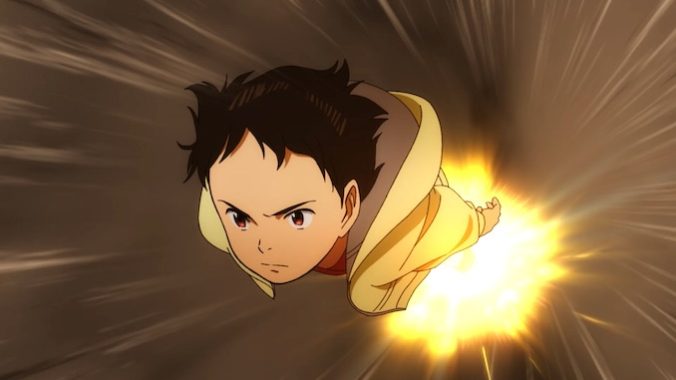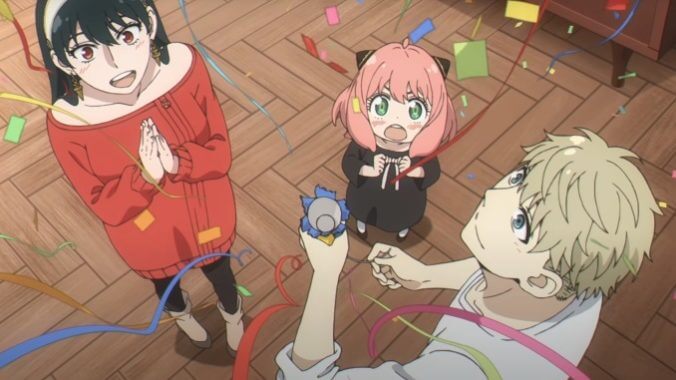The Best Anime Series of 2023
Photos Courtesy of Crunchyroll and Netflix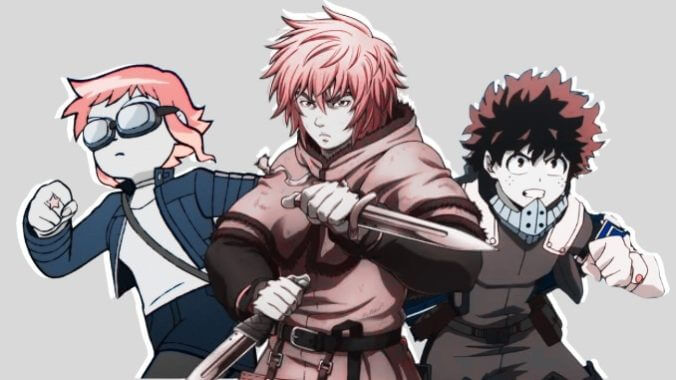
Like many segments of the entertainment industry, this year in anime was defined by an abundance of excellent works that came into being despite an array of labor issues. But unlike the American film and television industry, where creatives got a well-deserved happy ending in tentative new union contracts, 2023 signaled the continuation of brutal trends for those who create anime. Many series experienced high-profile production issues, like how conditions were so bad during the creation of Jujutsu Kaisen that multiple animators broke NDAs to speak out against studio MAPPA or how Zom 100 was met with mid-season delays that pushed its final three episodes months into the future. Despite the growing popularity of anime worldwide and an ever-increasing glut of greenlit shows, the production committees and studio executives who control the pursestrings continue to squeeze creatives, resulting in low pay, long hours, and worse output.
But while these poor labor conditions in the anime industry deserve ongoing scrutiny, the incredible work of animators, voice actors, screenwriters, and production staff who brought this year’s best shows to life still deserves to be recognized. 2023 was filled with showstoppers, and we had plenty of exciting premieres alongside long-awaited conclusions. Many thrust us into nuanced depictions of the past, while others painstakingly envisioned far-flung futures. And throughout, we were subject to impressive animation that realized exciting action set-pieces and conveyed swelling emotion. The following list, voted on by Paste editors, staff, and freelancers, is made up of established hits that found new highs, heavily anticipated newcomers that delivered, and a few under-watched shows you don’t want to miss.
Honorable Mentions: Undead Murder Farce, Ranking of Kings: The Treasure Chest of Courage, My Happy Marriage, I’m in Love with the Villainess, and The Ancient Magus’ Bride Season 2

15. The Magical Revolution of the Reincarnated Princess and the Genius Young Lady
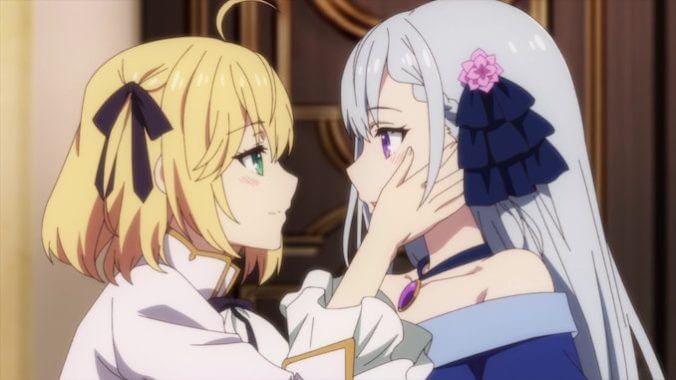
The Magical Revolution of the Reincarnated Princess and the Genius Young Lady was the unexpected delight of the winter, steadily improving all the way to its gorgeous finale. Overcoming not only its hilariously overlong name but also the many pitfalls associated with isekai light novel adaptations, it is a thoughtful and generously directed production that takes glee in blasting apart longstanding tropes while developing heartfelt romance between its leading ladies. The story centers on Anisphia Wynn Palettia, a magic-obsessed princess who takes in Euphie, a noble who recently had her engagement to the prince publicly annulled. While the first episode conveys the series’ penchant for well-animated action and comedy, it eventually explores the complicated feelings of its deuteragonists as they break free from their assigned roles and societal expectations. Despite its fantastical premise and plenty of well-rendered action sequences, its shot compositions wring out intimacy and the interiority of its cast, communicating Euphie’s initial listlessness and Anis’ anxieties about her responsibilities. And most importantly of all, their burgeoning feelings build towards satisfying climaxes as they work to break down the oppressive structures and class systems that plague their kingdom. Through effectively bouncing between courtship, comedy, and political intrigue, MagicRevo is one of the most pleasant surprises of the year. —Elijah Gonzalez
14. BanG Dream!! It’s My Go!!!!!

One of my favorite aspects of watching seasonal anime is that no matter how much knowledge you have going into a batch of shows—whether that’s having tabs on the next big adaptations or knowing which originals have an exciting staff—there will always be unexpected hits that come out of nowhere and steal the show. Despite its seemingly silly title (which somehow becomes thematically relevant later on), BanG Dream!! It’s My Go!!!!! is the unambiguous star of this summer in anime. It’s a spinoff of a multimedia music franchise I had never heard of, but considering the involvement of Flip Flappers’ lead writer Yuniko Ayana, I probably should have been paying attention. Many elements make this one special, but most immediately apparent is its ability to spin affecting drama out of its cast. The members of this act are a hot mess, each defined by complexes that make it difficult for their group to fully congeal, leading to misfires, breakdowns, and general dysfunction. But in the fleeting moments when they’re in sync, we not only see their potential as musicians but also how their performances give them something they’ve all been searching for.
Although the threat of an impending band breakup hangs over the entire season, this dynamic never gets old because these characters’ many hang ups are thoughtfully explored along the way. For instance, we learn that Tomori, the lyricist and heart of this group, has always struggled to fit in, but she’s finally able to communicate her feelings through songwriting. Soyo works as a more ominous parallel as fleeting memories of her old band make her desperate to recreate what they had. Director Koudai Kakimoto uses recurring mannerisms and evocative framing in concert with expressive animation to clue us into what these people are going through, which like many of the best freshman albums, feels tactile and raw. This craft culminates in musical performances that burn the house down as dynamic camera work, thematically resonant songs, and character growth comes together in perfect harmony. Don’t let BanG Dream!! It’s My Go!!!!! slip past your radar; it’s one of the best acts of the year. —Elijah Gonzalez
13. Skip and Loafer
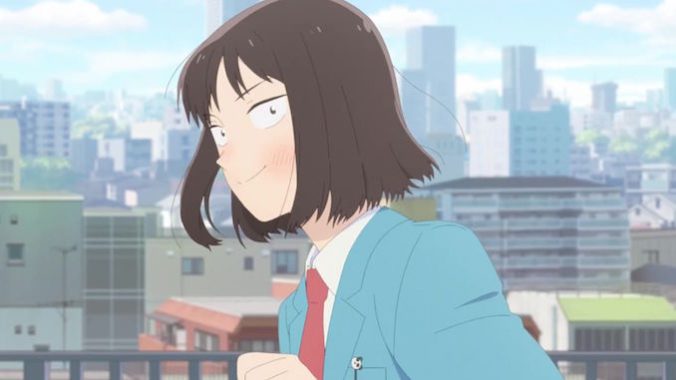
Although there is no shortage of anime about high school, Skip and Loafer differentiates itself through its boundless warmth and thoughtful treatment of its protagonists. We follow Mitsumi, a student who moves to Tokyo to attend an elite academy so she can eventually make her dream of revitalizing her rural home come true. While she’s initially overwhelmed by life in the bustling city, she is taken under the wing of Sousuke, a helpful first-year boy whose outwardly pleasant demeanor seems to hide traces of lingering pain. One of the series’ standout elements is how virtually every character is afforded an inner life—their charms, struggles, and flaws making each feel like fully rendered people instead of archetypes. For instance, although our heroine is hard-working and effortlessly kind, she also tends to stress herself out with self-imposed expectations, resulting in many sleepless nights.
This complexity is also reflected in Mitsumi’s eclectic friend group, made up of popular folks who have had to deal with unwanted advances or assumptions about their personality due to their looks, as well as those who have built up walls due to past judgment. In particular, it does a beautiful job representing the friendships that form between its young women, deftly avoiding tired tropes that would pit them against one another over a love interest. And though this work is buoyed by a general sense of levity, as reflected in its warm color palette, charming art style, and bounty of affecting moments, it isn’t afraid to add tension by introducing conflicts that threaten to spoil the burgeoning romance between its central pair. In a spring stacked with heavy hitters, Skip and Loafer was the show that never failed to brighten my day, its kindness and multifaceted cast making it one of the most brilliant high school dramas in some time. —Elijah Gonzalez
12. The Apothecary Diaries

Combining court politics with weekly medical-themed mysteries, Apothecary Diaries crafts a tantalizing concoction elevated by its immensely charming lead. Set in a fictionalized rendition of Ming-dynasty China, we follow Maomao, a young apothecary who is kidnapped and forced to work in the Imperial Palace as a servant. While she initially tries to keep her head down to avoid the dangers of being involved with the royal court, she can’t stop herself from solving a series of enigmatic illnesses, which raises her profile considerably. Watching Maomao use her abundance of scientific knowledge to deduce ailments and shady happenings delivers the same satisfaction brought when hyper-competent detectives piece together a case, making for a thoroughly captivating ride. And more than its twists and turns, these conundrums reveal the struggles of those living in the rear palace as our poison-loving heroine shows her soft side for fellow victims of this oppressive system. Maomao meets many companions and adversaries turned allies, and thanks to delightful dynamics between the cast, there’s a lot more here than just dour conspiracies and diseases. Toho Animation Studio and OLM further place us in this historical setting through gorgeous background art and consistently lavish animation that renders medical procedures and intimate gestures with care. Altogether, it makes for a potent mixture. —Elijah Gonzalez
11. Zom 100: Bucket List of the Dead
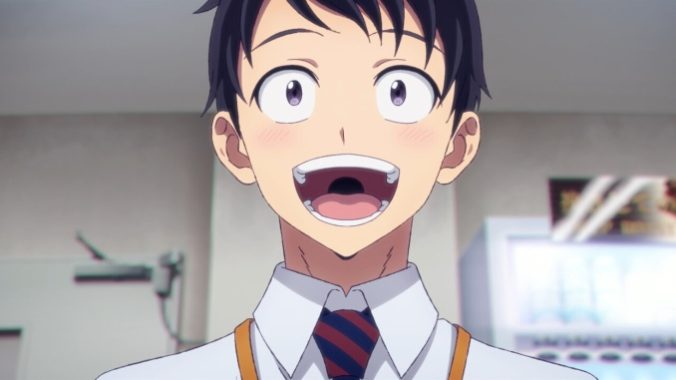
While Zom 100: Bucket List of the Dead couldn’t maintain the blistering momentum of its opening episode, I was pleasantly surprised that it continued to reiterate the main argument of its premiere: working under modern capitalism sucks so bad that a zombie apocalypse would be a welcome change of pace. As Akira realizes he won’t have to return to his exploitative job ever again, he starts on a bucket list to make up for lost time. Even after our protagonist finally embraces the idea he won’t be going back to the office, the series continues to hammer home its themes about work as other characters reconcile their miserable relationships with their labor. We see how most couldn’t realize their dreams, and even if they did, broken economic systems spoiled what should have been fulfilling. Even if its later stretches couldn’t quite match the freneticism of the premiere, vibrant animation captures the contrast between these characters’ newfound freedom and their tedious pasts. This isn’t to imply that the zombie apocalypse is entirely a vacation, as the group has to deal with plenty of life-or-death situations, but these stretches are usually more campy (i.e., zombie shark) than tense in a way that feels consistent with the generally lighter tone compared to its peers.
However, one unavoidable issue is the show’s massive production problems. Multiple delays have hurt its weekly pacing, and even months after it was supposed to conclude, its last few episodes still haven’t been released at the time of this list’s publication. Far worse are the likely implications for its staff, as these kinds of botched releases generally mean that the studio is being overworked to meet unreasonable deadlines—the exact thing this story is harping against. It all makes engaging with the series’ messaging much harder than it should be. —Elijah Gonzalez
10. Heavenly Delusion/Tengoku Daimakyo
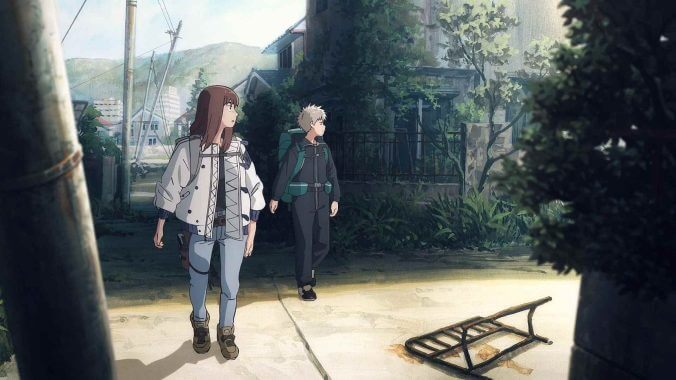
From its opening minutes, Heavenly Delusion’s sense of place is stunning. We switch perspectives between a hidden technologically advanced society and a post-apocalyptic landscape, both worlds rendered via visual storytelling and economic dialogue that avoids the kinds of exposition dumps found in so many less confident stories. At one point, the camera lingers on two figures walking down a dilapidated highway until it pans out into a sweeping wide angle of a city overrun with vegetation, the solemnity and odd beauty of this image keying us into both the state of this place and the tone of the proceedings.
We primarily follow this pair of travelers, Maru and his bodyguard Kiruko, two young people looking for a mysterious place called “Heaven” in this near-future Japan. Containing not only the type of cruelty you’d expect from its end-of-the-world scenario but also frequent moments of kindness, the show makes for a tonally unique mishmash bolstered by inspired direction and animation. All that said, it should be mentioned that its last two episodes are marred by a sordid turn that doesn’t treat its heavy subject matter with the respect it deserves (content warnings for violence and sexual assault). It’s a thorny series that I wish made some different choices, but at its best, it captures this setting so convincingly that it’s difficult to look away from its desolation. —Elijah Gonzalez
9. Mobile Suit Gundam: The Witch from Mercury
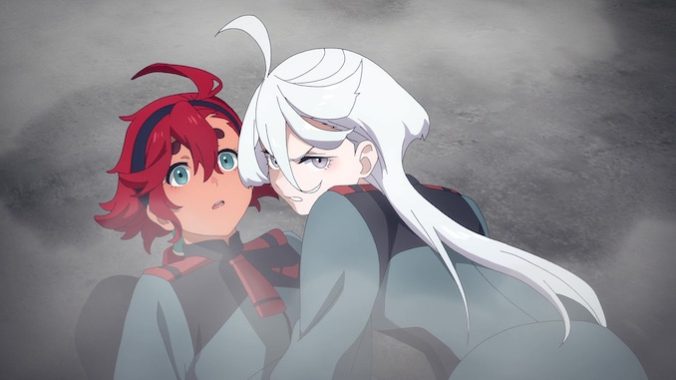
Mobile Suit Gundam: The Witch from Mercury has a lot going on. Not only does it borrow heavily from Revolutionary Girl Utena, Shakespeare’s The Tempest, and other Gundam series, but it also has its own complex political machinations and a massive cast. However, despite all these spinning plates, the show brings together its pastiche, worldbuilding, and references in a way that almost always feels additive instead of convoluted. Season 2 continues to follow Suletta Mercury, an ace mobile suit pilot and student at an elite academy, who finds herself caught up in a web of schemes surrounding a powerful interplanetary corporation, as her romantic relationship with Miorine, the heiress of said corporation, is tested. While the last season was primarily dedicated to school drama and relationships, intrigue bubbles to the forefront of this run, resulting in these sympathetically portrayed characters being placed in increasingly fraught circumstances. The days of ceremonial duels between giant robots are gone, replaced by life-or-death skirmishes fought by desperate factions.
Although these many groups and their plots are introduced in a somewhat dizzying fashion, these events are reiterated enough to make them parsable, establishing a sci-fi world where people are motivated by believable socioeconomic realities and personal beef. Along the way, it sets up plenty of crushing moments as these students face cruel twists that threaten to unmake their core beliefs. And seemingly unlike everyone else, I mostly enjoyed the rapid-fire series finale. While I admit the show could have used at least another episode or two to fully flesh out its characters’ fates or its larger thematic conflicts (particularly its political circumstances), the conclusion wrapped up this journey in a way that I emotionally bought into. Through battles that are equally exciting and devastating, corporate thriller machinations, and its central queer romance, The Witch from Mercury delivered on a considerable chunk of its sizable ambitions. —Elijah Gonzalez

